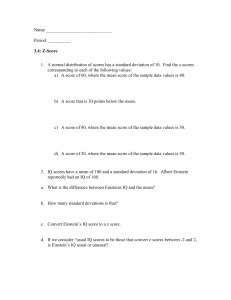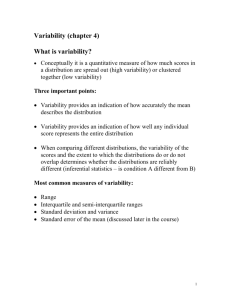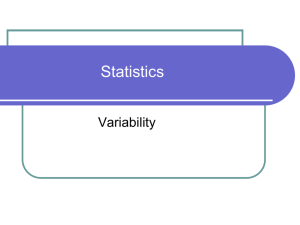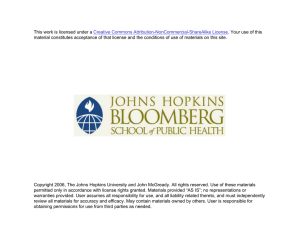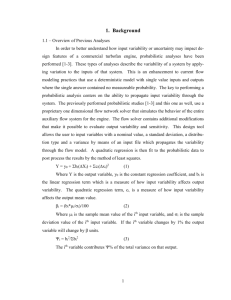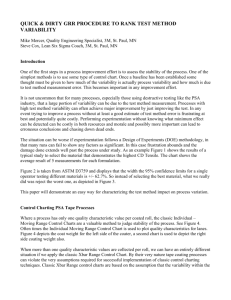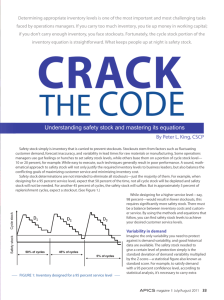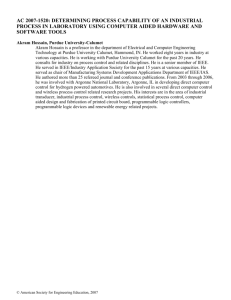Psy 231 Study Guide -- GW Chapter 4: Variability
advertisement
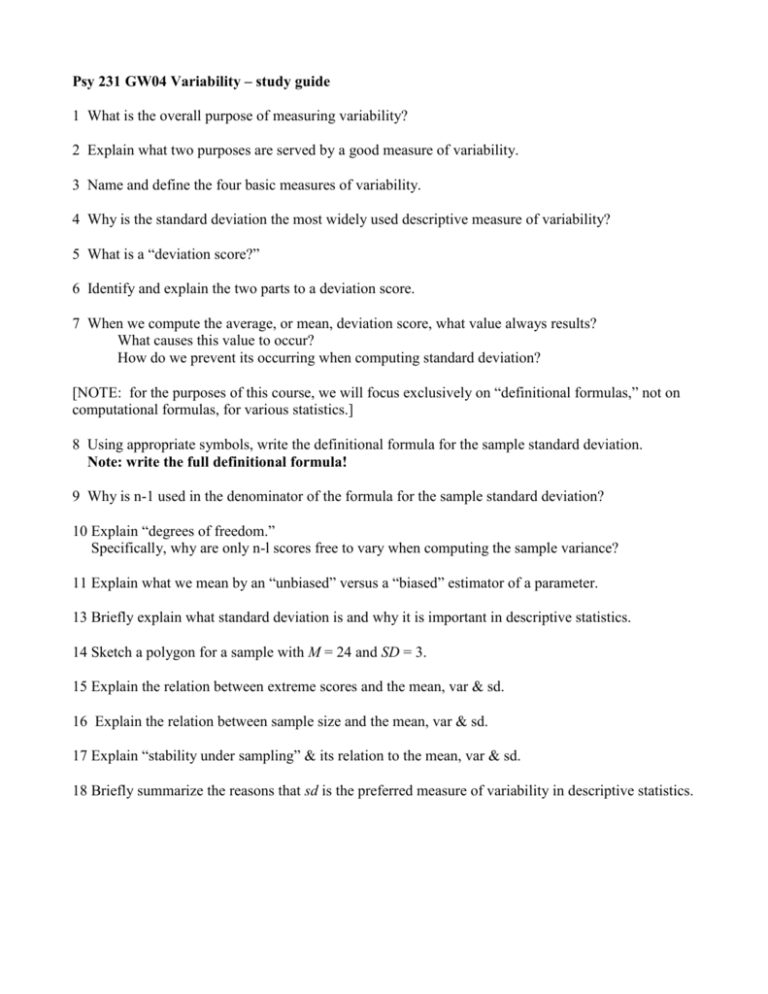
Psy 231 GW04 Variability – study guide 1 What is the overall purpose of measuring variability? 2 Explain what two purposes are served by a good measure of variability. 3 Name and define the four basic measures of variability. 4 Why is the standard deviation the most widely used descriptive measure of variability? 5 What is a “deviation score?” 6 Identify and explain the two parts to a deviation score. 7 When we compute the average, or mean, deviation score, what value always results? What causes this value to occur? How do we prevent its occurring when computing standard deviation? [NOTE: for the purposes of this course, we will focus exclusively on “definitional formulas,” not on computational formulas, for various statistics.] 8 Using appropriate symbols, write the definitional formula for the sample standard deviation. Note: write the full definitional formula! 9 Why is n-1 used in the denominator of the formula for the sample standard deviation? 10 Explain “degrees of freedom.” Specifically, why are only n-l scores free to vary when computing the sample variance? 11 Explain what we mean by an “unbiased” versus a “biased” estimator of a parameter. 13 Briefly explain what standard deviation is and why it is important in descriptive statistics. 14 Sketch a polygon for a sample with M = 24 and SD = 3. 15 Explain the relation between extreme scores and the mean, var & sd. 16 Explain the relation between sample size and the mean, var & sd. 17 Explain “stability under sampling” & its relation to the mean, var & sd. 18 Briefly summarize the reasons that sd is the preferred measure of variability in descriptive statistics.






